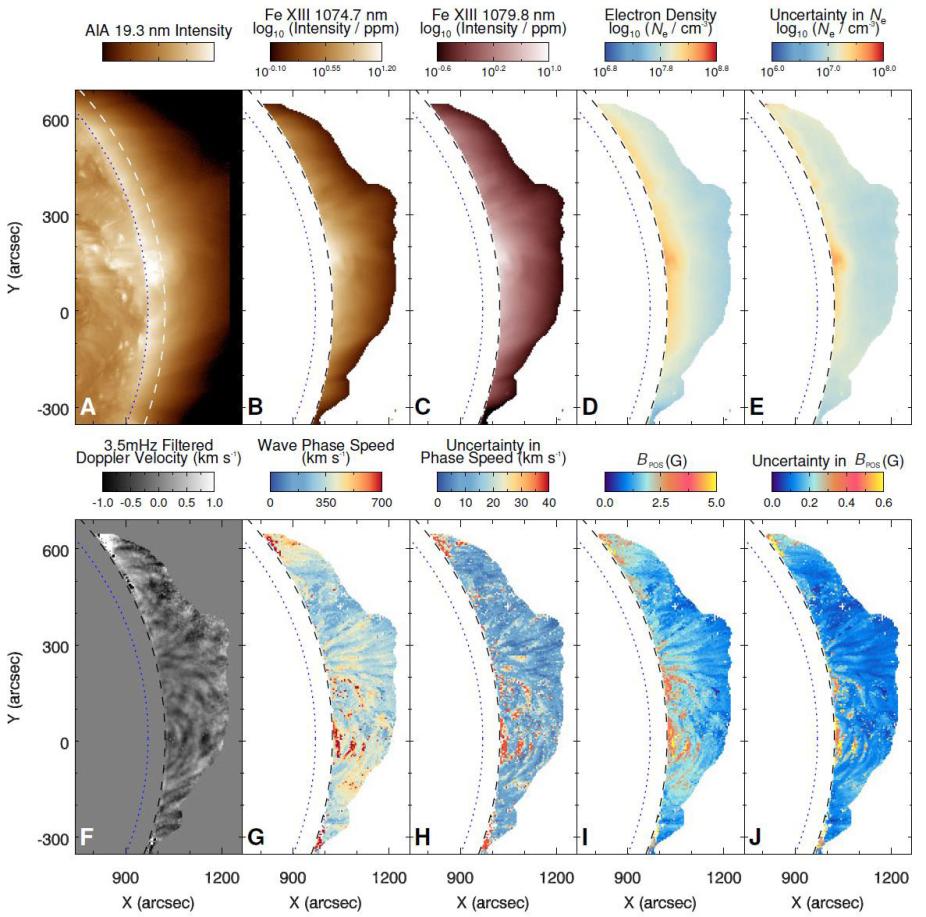Publication Name: Science China Technological Sciences; Authors: Zihao Yang, Hui Tian, Steven Tomczyk, Richard Mortan, XianYong Bai, Tanmoy Samanta, and YaJie Chen
Magnetoseismology, a technique of magnetic field diagnostics based on observations of magnetohydrodynamic (MHD) waves, has been widely used to estimate the field strengths of oscillating structures in the solar corona. However, previously magnetoseismology was mostly applied to occasionally occurring oscillation events, providing an estimate of only the average field strength or one-dimensional distribution of field strength along an oscillating structure. This restriction could be eliminated if we apply magnetoseismology to the pervasive propagating transverse MHD waves discovered with the Coronal Multi-channel Polarimeter (CoMP).

Analysis results for the observation on November 3, 2016 (dataset D2). The dotted and dashed curves mark the solar limb and the inner boundary of the CoMP FOV, respectively. (A) The AIA 19.3 nm image taken at 20:00:07 UT. (B)(C): The intensity maps of Fe xiii 1074.7 nm and 1079.8 nm. (D)-(E): The maps of electron number density and its uncertainty. (F): The filtered Doppler velocity map at 20:34:54 UT. (G)-(H): The maps of phase speed and its uncertainty. (I)-(J): The maps of derived BPOS and its associated uncertainty.
Using several CoMP observations of the Fe xiii 1074.7 nm and 1079.8 nm spectral lines, we obtained maps of the plasma density and wave phase speed in the corona, which allow us to map both the strength and direction of the coronal magnetic field in the plane of sky. We also examined distributions of the electron density and magnetic field strength, and compared their variations with height in the quiet Sun and active regions. Such measurements could provide critical information to advance our understanding of the Sun’s magnetism and the magnetic coupling of the whole solar atmosphere.